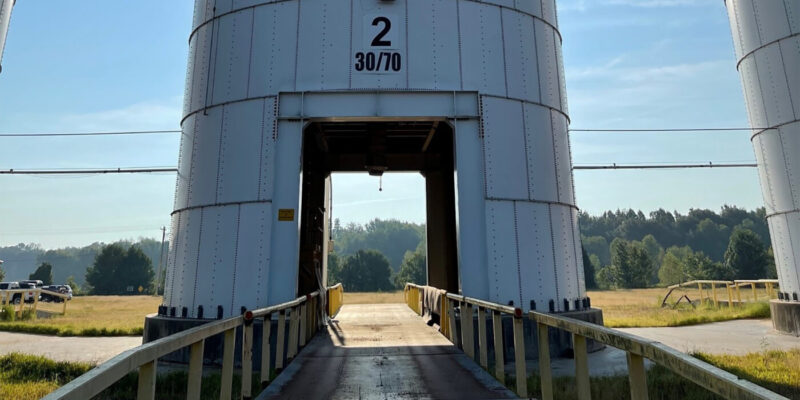
In industries dealing with hazardous materials, safety is paramount. The storage of such materials demands stringent protocols and meticulous attention to detail to mitigate potential risks and ensure the well-being of both personnel and the environment. Dry bulk storage tanks play a crucial role in this process, providing a secure containment solution for a variety of hazardous substances. In this comprehensive guide, we delve into the safety considerations essential for the effective utilization of dry bulk storage tanks in hazardous material storage.
Understanding Dry Bulk Storage Tanks
Dry bulk storage tanks are specialized containers designed to store and transport granular or powdered materials such as chemicals, fertilizers, grains, or minerals. These tanks come in various shapes and sizes, including silos, hoppers, and bins, to accommodate different storage requirements. Typically made from materials like steel, concrete, or fiberglass, dry bulk storage tanks offer durability and resistance to corrosion, ensuring the integrity of stored hazardous materials over extended periods.
Safety Considerations
- Material Compatibility: One of the fundamental safety considerations when using dry bulk storage tanks is ensuring compatibility between the tank material and the stored hazardous material. Chemical reactions or corrosion resulting from incompatible materials can compromise the tank’s structural integrity, leading to leaks or ruptures. Conduct thorough compatibility assessments to select appropriate tank materials for specific hazardous substances.
- Structural Integrity: Regular inspection and maintenance of dry bulk storage tanks are essential to ensure structural integrity and prevent potential failures. Structural weaknesses, such as corrosion, cracks, or deterioration, can compromise the tank’s ability to contain hazardous materials safely. Implement a robust inspection schedule and adhere to maintenance protocols recommended by industry standards and regulatory guidelines.
- Ventilation and Pressure Control: Proper ventilation and pressure control systems are vital for managing the internal environment of dry bulk storage tanks. Accumulation of pressure or volatile gases within the tank can pose explosion hazards or lead to structural damage. Install ventilation systems equipped with pressure relief mechanisms to maintain safe operating conditions and prevent overpressurization incidents.
- Fire Prevention and Protection: Hazardous materials stored in dry bulk storage tanks are susceptible to fire hazards, necessitating proactive measures for fire prevention and protection. Implement fire suppression systems, such as sprinklers or foam suppression, and adhere to fire safety protocols, including adequate spacing between tanks and the use of non-combustible materials in tank construction.
- Environmental Containment: In the event of a tank breach or spillage, containment measures are crucial to prevent environmental contamination and mitigate the spread of hazardous materials. Implement secondary containment systems, such as berms or dikes, around storage tanks to contain leaks and spills, minimizing their impact on surrounding soil and water sources.
- Emergency Response Planning: Develop comprehensive emergency response plans tailored to the specific hazards associated with the stored materials and the operating environment. Conduct regular training exercises and drills to ensure personnel are adequately prepared to respond effectively to emergencies, including spills, leaks, or fires involving dry bulk storage tanks.
Regulatory Compliance
Adherence to regulatory requirements and industry standards is non-negotiable when it comes to the safe operation of dry bulk storage tanks in hazardous material storage facilities. Stay informed about relevant regulations, codes, and standards issued by authorities such as the Occupational Safety and Health Administration (OSHA), the Environmental Protection Agency (EPA), and industry organizations like the American Petroleum Institute (API). This includes compliance not only for hazardous materials but also for potable water tanks, which must meet specific health and safety standards to ensure the safety of drinking water. Ensure compliance with storage tank regulations about design, installation, inspection, and maintenance to uphold safety standards and avoid regulatory penalties.
- Design and Construction Standards: Ensure that dry bulk storage tanks are designed and constructed in accordance with recognized industry standards and regulations. This includes selecting appropriate materials, incorporating necessary safety features, and adhering to specifications that account for the properties of the stored hazardous materials.
- Inspection and Testing Requirements: Regular inspections and testing are mandated by regulatory authorities to ensure the ongoing safety and integrity of dry bulk storage tanks. Adhere to inspection schedules, conduct non-destructive testing, and address any identified issues promptly to maintain compliance with regulatory standards.
- Record-Keeping and Reporting: Maintain comprehensive records of all inspections, maintenance activities, incident reports, and safety training sessions. Regulatory authorities may require periodic reporting of these activities to ensure compliance and demonstrate a commitment to safety.
- Permitting and Approval Processes: Obtain all necessary permits and approvals from regulatory authorities before installing or modifying dry bulk storage tanks. This includes submitting detailed plans, conducting environmental impact assessments, and demonstrating adherence to safety standards and regulations.
- Emergency Planning and Community Right-to-Know Act (EPCRA) Compliance: Ensure compliance with EPCRA requirements by providing necessary information to local emergency planning committees and making material safety data sheets (MSDS) available to the public. This promotes transparency and enhances community safety.
Conclusion
Safety considerations are paramount in the storage and handling of hazardous materials, and dry bulk storage tanks play a crucial role in maintaining safe operating environments within industrial facilities. By adhering to rigorous safety protocols, conducting regular inspections, and implementing appropriate mitigation measures, the risks associated with storing hazardous materials in dry bulk storage tanks can be effectively managed. Stay vigilant, stay compliant, and prioritize safety above all else to ensure the well-being of personnel, the environment, and surrounding communities.











